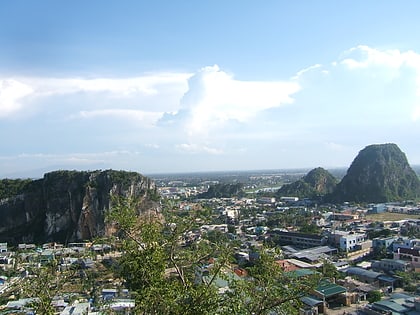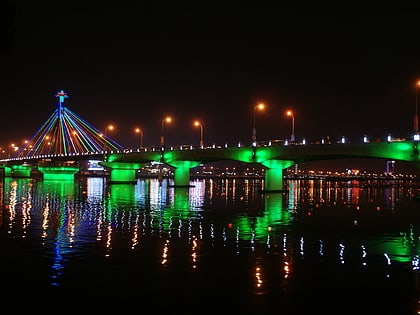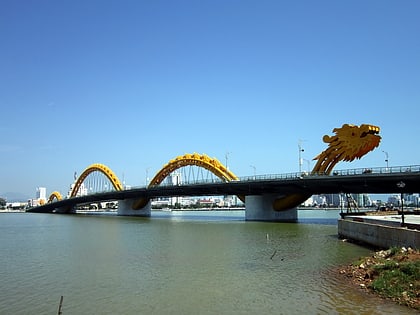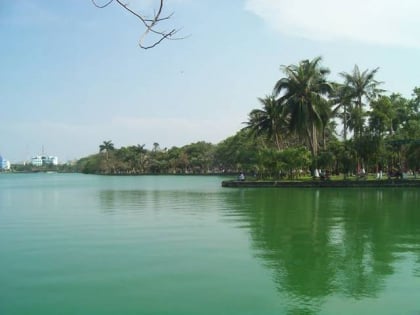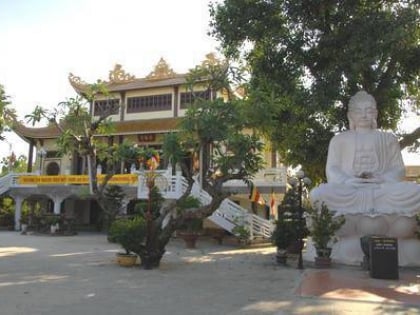Marble Mountains, Da Nang


Facts and practical information
Rising majestically from the flat coastal plains of Da Nang, Vietnam, the Marble Mountains are a cluster of five limestone and marble hills, each representing one of the five elements - metal, wood, water, fire, and earth. This remarkable site, steeped in mythology and natural beauty, is not only a topographical wonder but also a spiritual haven, featuring a series of Buddhist sanctuaries, pagodas, and temples carved into the mountains and dotted around the landscape.
The most famous of these temples is nestled within the Water Mountain, the largest and most visited of the Marble Mountains. Visitors are welcomed by the sound of a gong and the sight of a stone staircase leading up to the entrance, where they are greeted by intricate carvings and statues that set the tone for the serene experience ahead. Inside, the temple is a labyrinth of caves and grottoes, each a sanctuary of tranquility and reflection, with altars dedicated to Buddhist and Hindu deities.
The Marble Mountains are not only a place of worship but also a site of historical significance. During the Vietnam War, the caves provided a refuge for the Viet Cong, and remnants of this period are still visible to visitors. The mountains are also renowned for their traditional stone carving industry, with local artisans creating intricate sculptures and souvenirs.
Tourists can explore the Marble Mountains by climbing the stone steps carved into the mountainside, which lead to panoramic viewpoints offering breathtaking views of the surrounding landscape and the East Sea. The journey to the summit is as rewarding as the destination itself, with numerous caves and pagodas to discover along the way.
Marble Mountains – popular in the area (distance from the attraction)
Nearby attractions include: Museum of Cham Sculpture, Nguyễn Văn Trỗi Bridge, Hàn River Bridge, Dragon Bridge.
